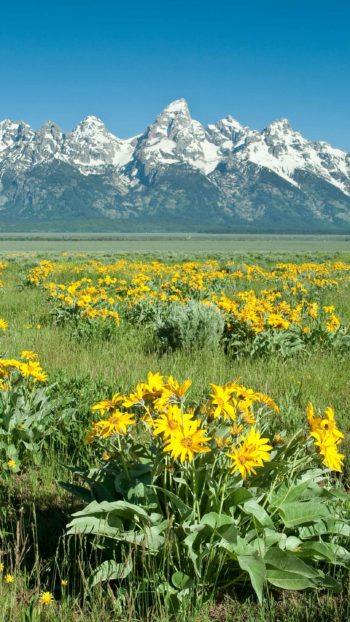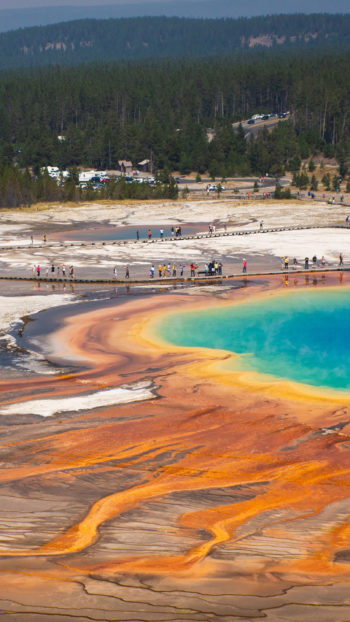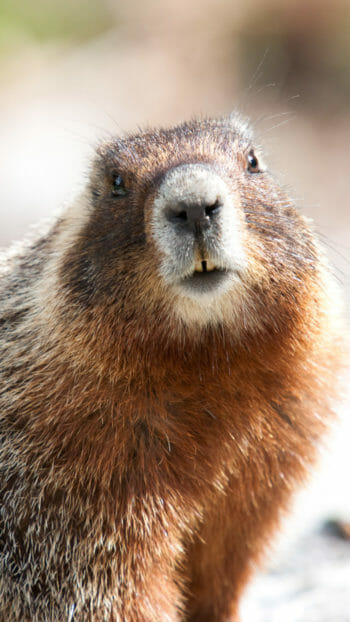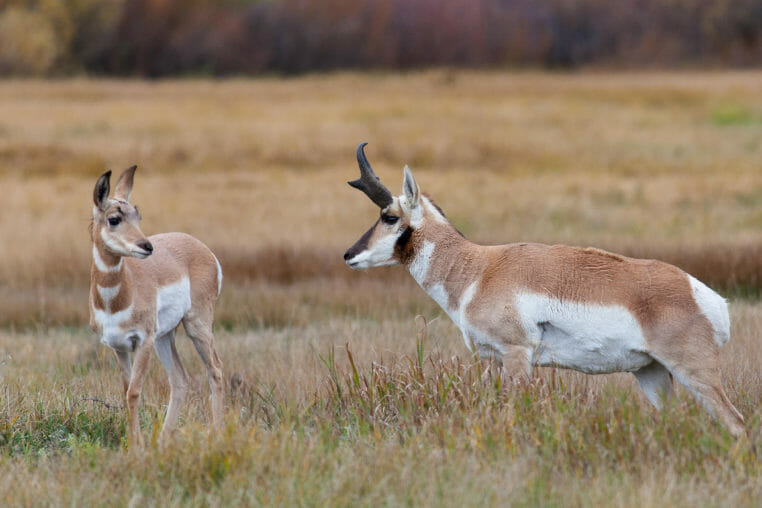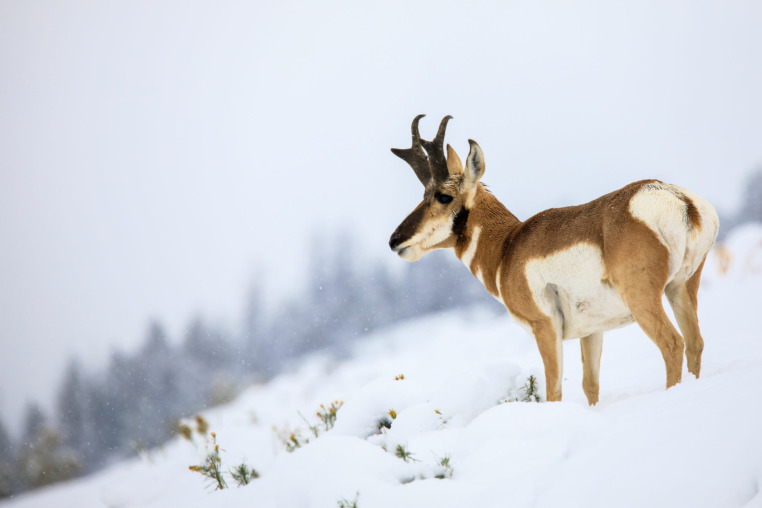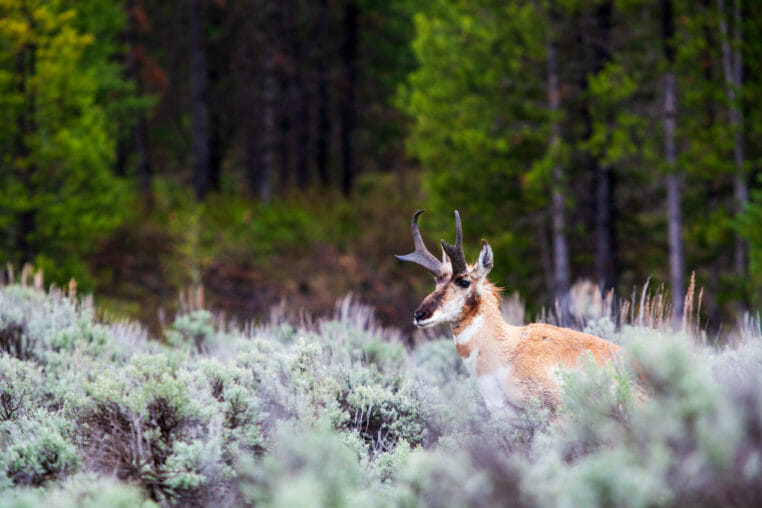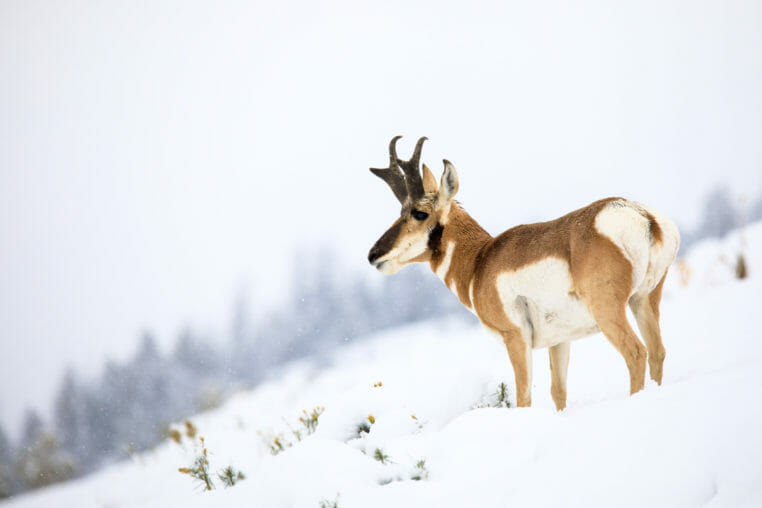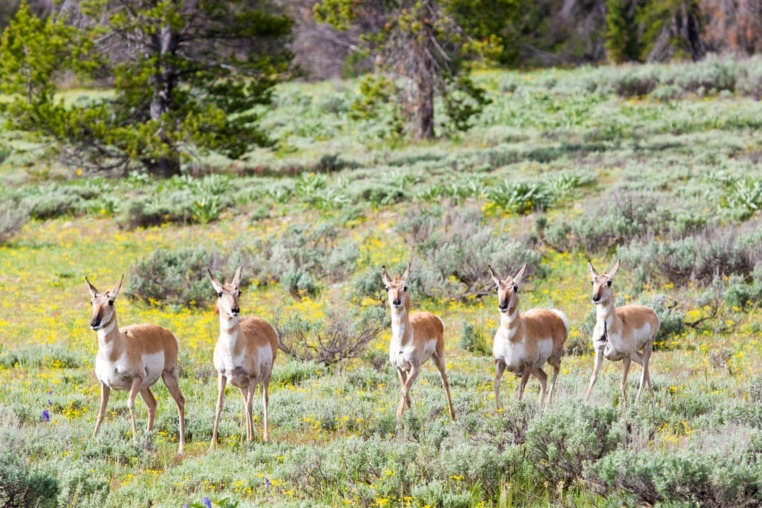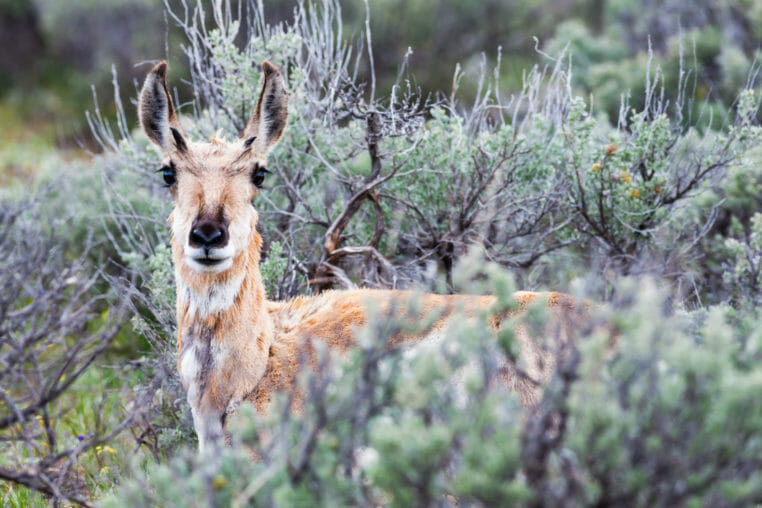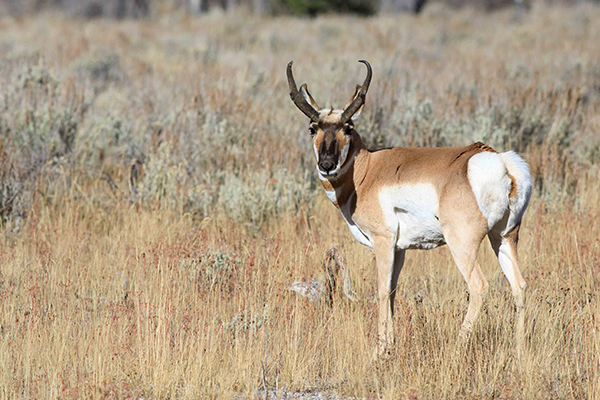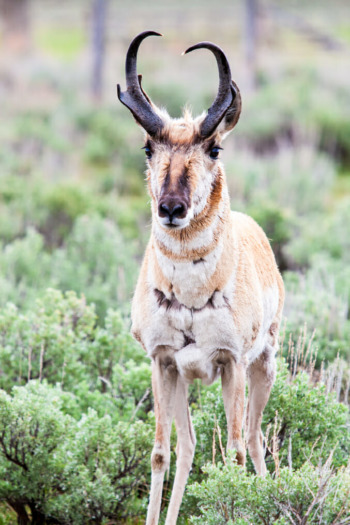
Antilocapra americana
The pronghorn antelope is one of the most interesting and unique species we have in North America, and many people haven’t even heard of them! They are only found in Western North America from southern Canada to Northern Mexico. They are called antelope, but they are not true antelope. While they closely resemble African antelope, they are a completely different species and not at all genetically related. They are also the fastest land animal in North America!
Wildlife Viewing
- Yellowstone
- Grand Teton
Book Online
Watch For Wildlife On These Tours
About
Evolutionary Superpowers
The pronghorn antelope has many special talents. They are incredibly fast, earning their place as the second fastest land animal in the world at a whopping 60mph! They co-evolved with the North American cheetah which went extinct 12,000 years ago, so they evolved their speed to survive. Their eyesight is extraordinary on top of that, it is as powerful as 8x binocular magnification. Because they are so fast and can see so far, you will not see pronghorn wander into wooded areas. This would make them extremely vulnerable. They are safest out in the open where they can see predators coming and have plenty of space to outrun them.
Diet
When you gaze around the Greater Yellowstone Ecosystem, you will notice an enormous abundance of sagebrush. Very few animals actually eat this plant, and the pronghorn is one of them. Because it is very difficult to digest, it requires an enzyme to break it down which the pronghorn have in their system.
Reproduction
Pronghorn are known for their abundance in western states like Wyoming where their numbers have reached as high as 565,000. Pronghorn form harems like other ungulates, which are groups of females (does) with one dominant male (buck). Females will visit different harems and stay with the male for a short time before visiting another, then choose the male she wishes to breed with when she’s close to estrus. Sometimes females will incite fights between two males to determine which one she will choose.
Female pronghorn almost always have twins when they give birth. Within a fawn’s first four days it can outrun a human, and after a week it can outrun any predator!
How to Find Pronghorn
Pronghorn antelope are very common in the GYE and are diurnal animals, meaning they are active during the day. They migrate south in the winter and are generally one of the last to migrate back up north for the summer months, so you can expect to start seeing them in June.
FAQs
How fast can a pronghorn run?
Pronghorn are the second fastest land animal in the world, capable of reaching speeds up to 60 miles per hour. They evolved this incredible speed alongside the now-extinct North American cheetah more than 12,000 years ago.
What do pronghorn antelope eat?
Pronghorn have a unique digestive system that allows them to consume sagebrush, a plant avoided by most other animals in the Greater Yellowstone Ecosystem. They also graze on grasses, forbs, and shrubs, but their ability to digest sagebrush sets them apart.
When is the best time to see pronghorn in Yellowstone and Grand Teton?
Pronghorn are diurnal, meaning they are most active during the day. They migrate south in winter and typically return north by June, making summer and fall the best seasons for sightings in the Greater Yellowstone Ecosystem.
How do pronghorn raise their young?
Female pronghorn almost always give birth to twins. Pronghorn fawns grow quickly—by four days old they can outrun a human, and within a week they are fast enough to evade most predators.
How many pronghorn are there in Wyoming?
Wyoming is home to the largest population of pronghorn in North America, with estimates reaching over 500,000 individuals. This makes the state one of the best places to observe these animals in the wild, especially within the Greater Yellowstone Ecosystem.
Further Reading
Jackson Hole Wildlife
Jul 12, 2024
Thanks to the range of different habitats that scatter across the sprawling valley, there is a plethora of wildlife to be found. The forests house woodland creatures like foxes, mule deer, black bears, pine martens, and elk.
A Month by Month Guide to Grand Teton National Park
Jun 21, 2024
Each and every month has something special to note, meaning that no matter what season you visit will be a special time. Use this guide to determine what time of year aligns best with what your interests and goals are.

